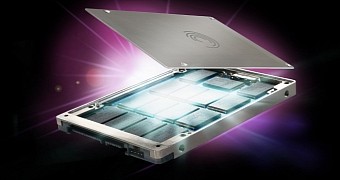Storage devices are still mostly divided between magnetic models and solid state units, but the lines are blurring and, eventually, there won't be much of a line left due to a merger between the two. The new collaboration between Seagate and Micron suggests that much.
Hard disk drives are Seagate's primary specialty. While it has been dabbling in solid state drives for a few years, the company has been making HDDs for decades.
Meanwhile, Micron is one of the best known solid state storage device makers in the world, offering everything from consumer SATA SSDs to memory cards and embedded chips.
A collaboration on hybrid SSD-HDD drives would be a natural result of the contract. Solid state hybrid drives or hybrid hard drives as they are otherwise called (SSHDs / HHDs).
Alas, the two companies don't seem all that hasty, so they intend to only work together on SAS SSDs and strategic NAND supply, to start with.
The Seagate-Micron pact
The two companies have signed a multi-year agreement for SAS SSD storage development, but they expect it to extend later.
Enterprise storage solutions featuring Micron NAND flash memory will be the main bread and butter of their association.
Consumer SSDs are all well and good, but they sell a lot less than HDDs due to the higher prices, and enterprise customers (businesses of all sizes) always buy more anyway. Such as the perks of getting bulk orders.
With clients like HP and EMC Corporation, you can be sure that the new team will be making quite a bit of money in the coming years.
What this means for us common folk
In the immediate future, not all that much. The storage devices Seagate and Micron will create won't make it beyond enterprise supply chains. The SAS interface isn't used outside servers and workstations.
But as the two companies collaborate more, they will surely come up with some technology or refinement that will trickle down to the consumer industry sooner or later.
Hopefully, an overall reduction in the cost of NAND Flash-based storage drives will be among those advantages.

 14 DAY TRIAL //
14 DAY TRIAL //